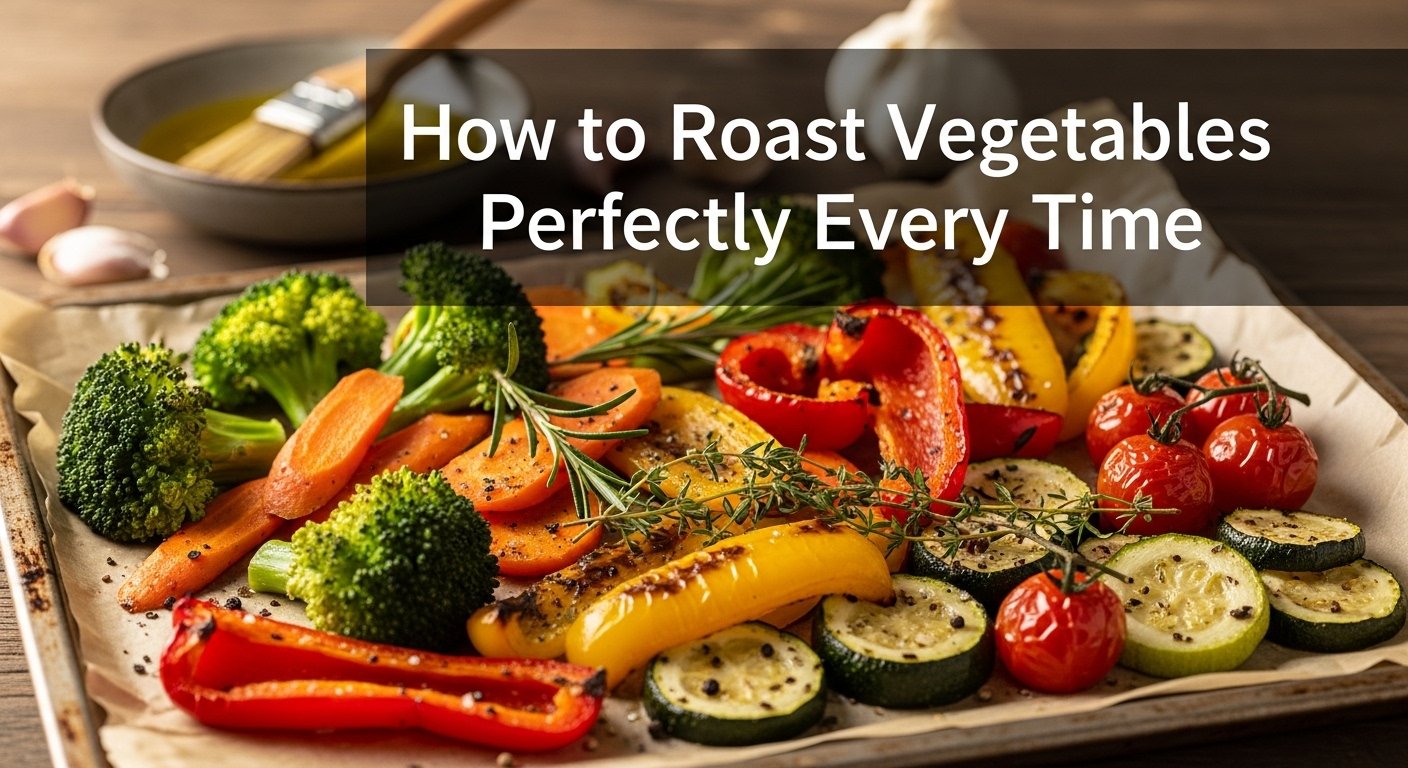Are your roasted vegetables often soggy, bland, or unevenly cooked? You’re not alone! Many home cooks struggle to achieve that perfect balance of crispy edges, tender interiors, and rich, caramelized flavor. Interestingly, searches for “roasted vegetables” have shown a significant increase over the last decade, with peak interest around holidays, proving just how popular and desired this skill is. This comprehensive guide will equip you with all the knowledge and techniques you need to master how to roast vegetables perfectly every time, transforming ordinary produce into extraordinary dishes.
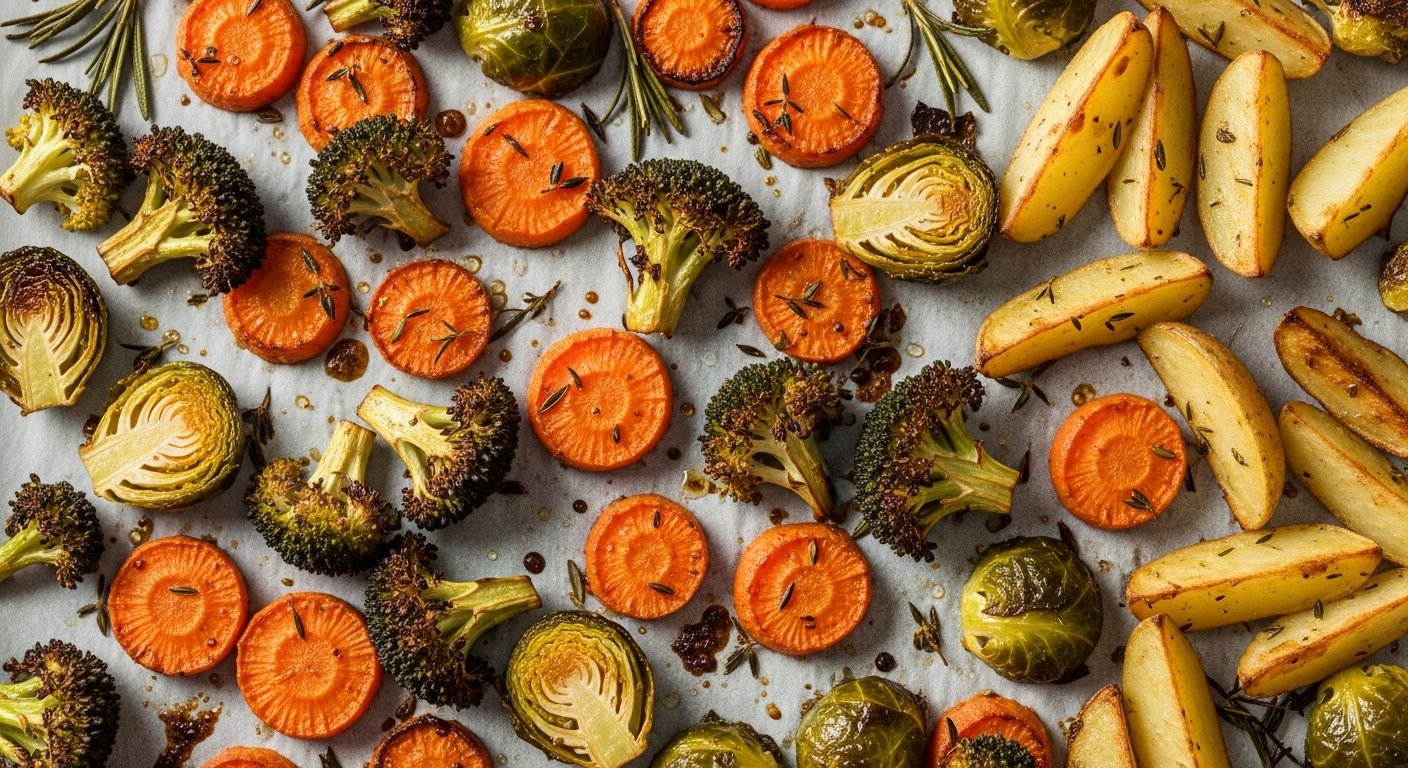
The secret to perfect roasted vegetables lies in understanding a few key principles. You need high heat, proper preparation, and plenty of space for your veggies to breathe. Forget about steaming or boiling them; roasting brings out a natural sweetness and creates an irresistible texture that other cooking methods simply can’t match. We will dive deep into everything from choosing the right produce to achieving that coveted Maillard reaction, ensuring your roasted vegetables are always a triumph.
The Foundation of Flavor: Choosing the Best Vegetables to Roast
Almost any vegetable can be roasted, but some truly shine under high heat. Consider a mix of textures and flavors for a well-rounded dish. Heartier root vegetables and cruciferous options are especially well-suited for roasting.
Top Picks for Easy Roasted Vegetables:
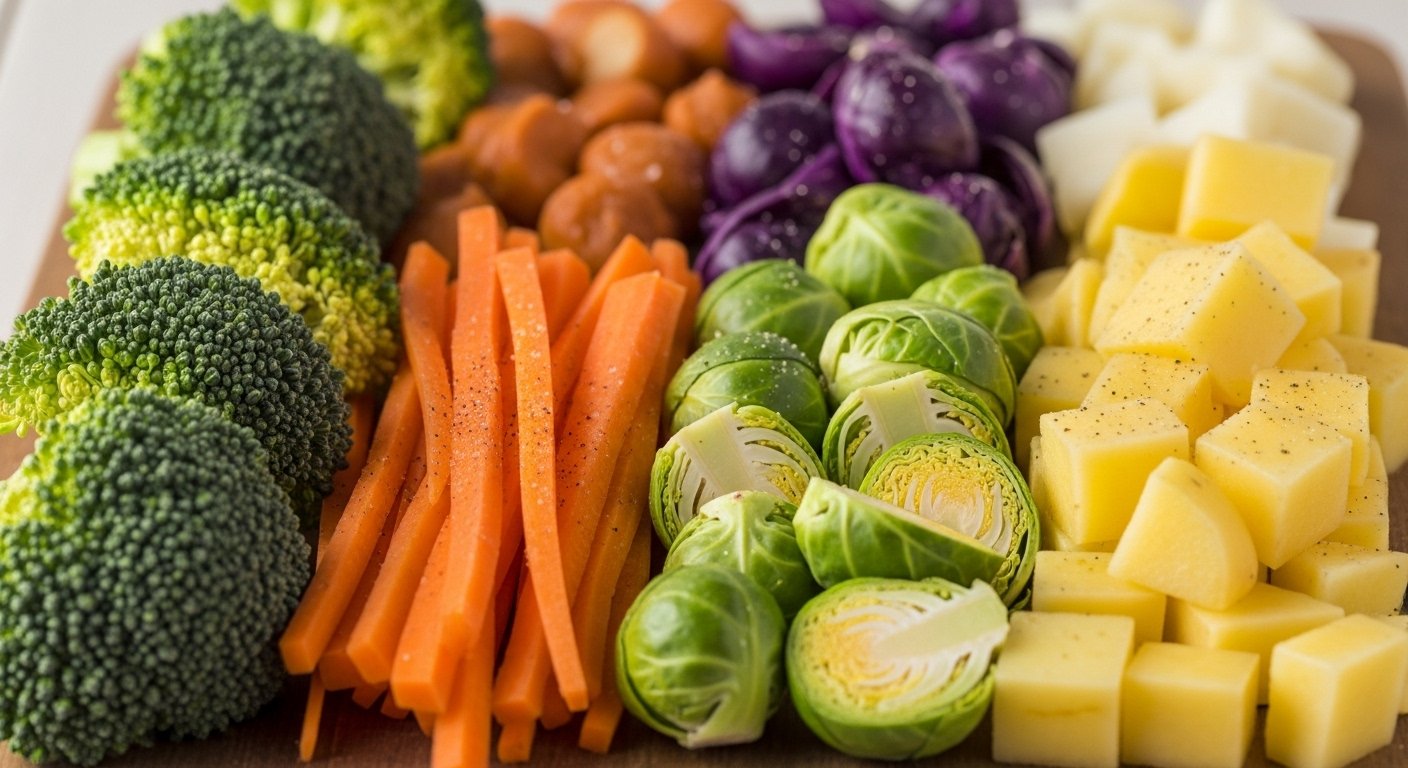
How Do You Prep Vegetables for Roasting? Essential Steps
Proper preparation is critical for crispy roasted vegetables. Taking a few extra minutes here will make a significant difference in the final outcome. Follow these steps for success.
1. Wash and Dry Thoroughly
Always wash your vegetables well to remove any dirt. More importantly, ensure they are completely dry before adding oil and seasoning. Excess moisture creates steam, which prevents browning and leads to soggy roasted vegetables. Pat them dry with a clean kitchen towel or paper towels. This simple step is a game-changer.
2. Cut into Uniform Pieces
Consistency is key for even cooking. Cut your vegetables into similar-sized pieces. If you’re roasting a mix of different vegetables, consider their individual cooking times. For example, denser root vegetables like potatoes and carrots need longer to cook than softer vegetables like bell peppers or broccoli. To manage this, cut denser vegetables into smaller pieces or start them roasting earlier. Learning how to master basic knife skills can greatly improve your prepping efficiency.
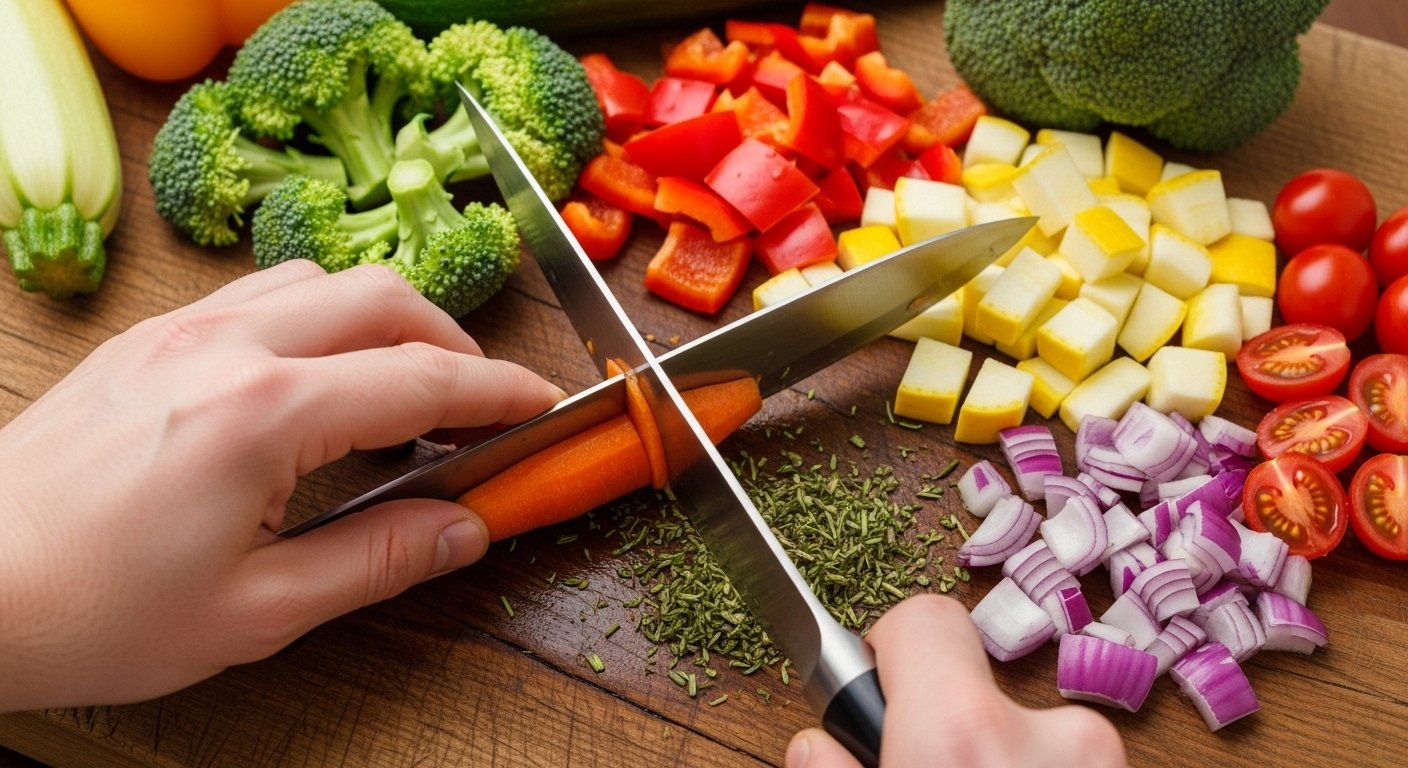
The Power of Oil: Achieving Crispy Roasted Vegetables
Oil is not just for preventing sticking; it’s essential for flavor, browning, and creating that desirable crispy texture. The right amount and type of oil for roasting vegetables makes all the difference.
Choosing the Right Oil
High smoke point oils are best for roasting at high oven temperature. Olive oil is a popular choice due to its flavor and relatively high smoke point, but avocado oil or grapeseed oil also work well. You can even consider the differences between cast iron vs stainless steel skillet for other cooking methods, but for roasting, a good quality oil is key.
How Much Oil to Use?
Don’t be shy with oil, but don’t drown your vegetables either. A thin, even coating is what you’re aiming for. Too little oil and your vegetables will dry out and stick; too much and they might become greasy or soggy. As a general rule, use about 1-2 tablespoons of oil per pound of vegetables. Toss them thoroughly in a large bowl to ensure every piece is lightly coated.
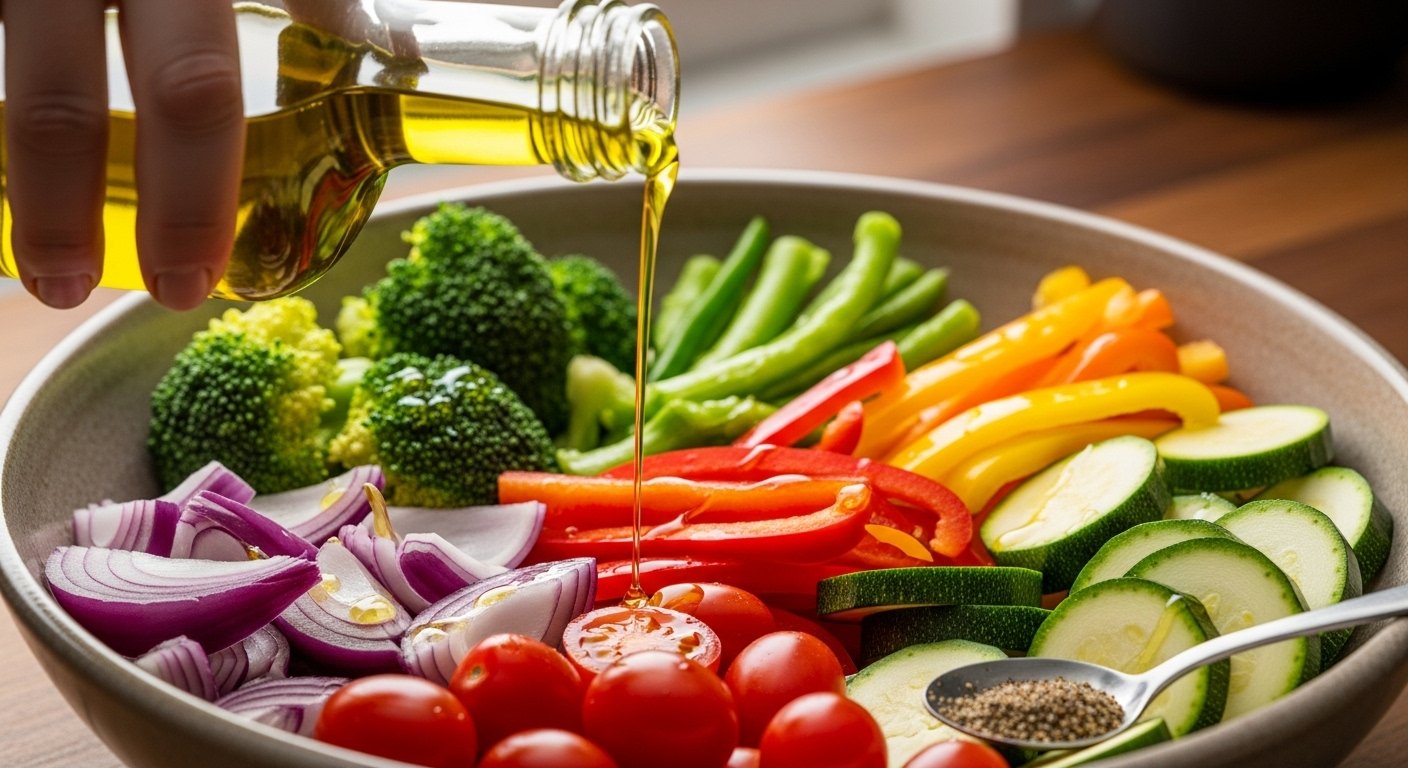
How Do You Season Vegetables for Roasting? Flavor Builders
Seasoning for roasted vegetables is where you can truly customize the flavor. Simple salt and pepper are a great start, but don’t hesitate to experiment with herbs and spices.
Basic Seasoning
Herb and Spice Combinations
Fresh or dried herbs can elevate your roasted vegetables. For example, rosemary and thyme pair wonderfully with root vegetables, while oregano and garlic powder complement bell peppers and zucchini. Consider the benefits of fresh vs dried herbs cooking guide for your preferred intensity. Here are some ideas:
Mastering Oven Temperature and Timing: The Best Temperature for Roasting Vegetables
The oven temperature is perhaps the most crucial factor for achieving perfectly roasted vegetables. Too low, and they’ll steam instead of roast, leading to limp results. Too high, and they might burn before cooking through.
What Temperature Should I Roast Vegetables At?
For most vegetables, a high oven temperature is ideal for crispy roasted vegetables. Roasting vegetables at moderate temperatures (around 375°F to 425°F or 190°C to 220°C) helps achieve desirable caramelization while minimizing excessive charring and the potential formation of harmful compounds. [5, 8, 9] This range allows the Maillard reaction to occur efficiently, giving your vegetables that beautiful golden-brown crust and deep flavor without burning them. Preheat your oven thoroughly before adding the vegetables.
How Long Do You Roast Vegetables For?
Roasted vegetable cooking times vary depending on the type and size of the vegetables. Generally, aim for the following ranges, checking for doneness and crispiness as you go:
Toss the vegetables halfway through the cooking time to ensure even browning. If you are roasting root vegetables, they will typically require a longer duration due to their density.
The Golden Rule: Don’t Crowd the Pan
This is perhaps the most common mistake home cooks make, and it’s the main reason for soggy roasted vegetables. When you overcrowd the Sheet pan, the vegetables release their moisture, and instead of roasting, they end up steaming. This prevents them from browning and becoming crispy.
Give Them Space
Arrange your vegetables in a single layer on the Sheet pan. Each piece should have a little space around it. If you have a large batch of vegetables, use two Sheet pans or roast them in batches. Using Parchment paper can also help prevent sticking and make cleanup easier, while still allowing for good air circulation.
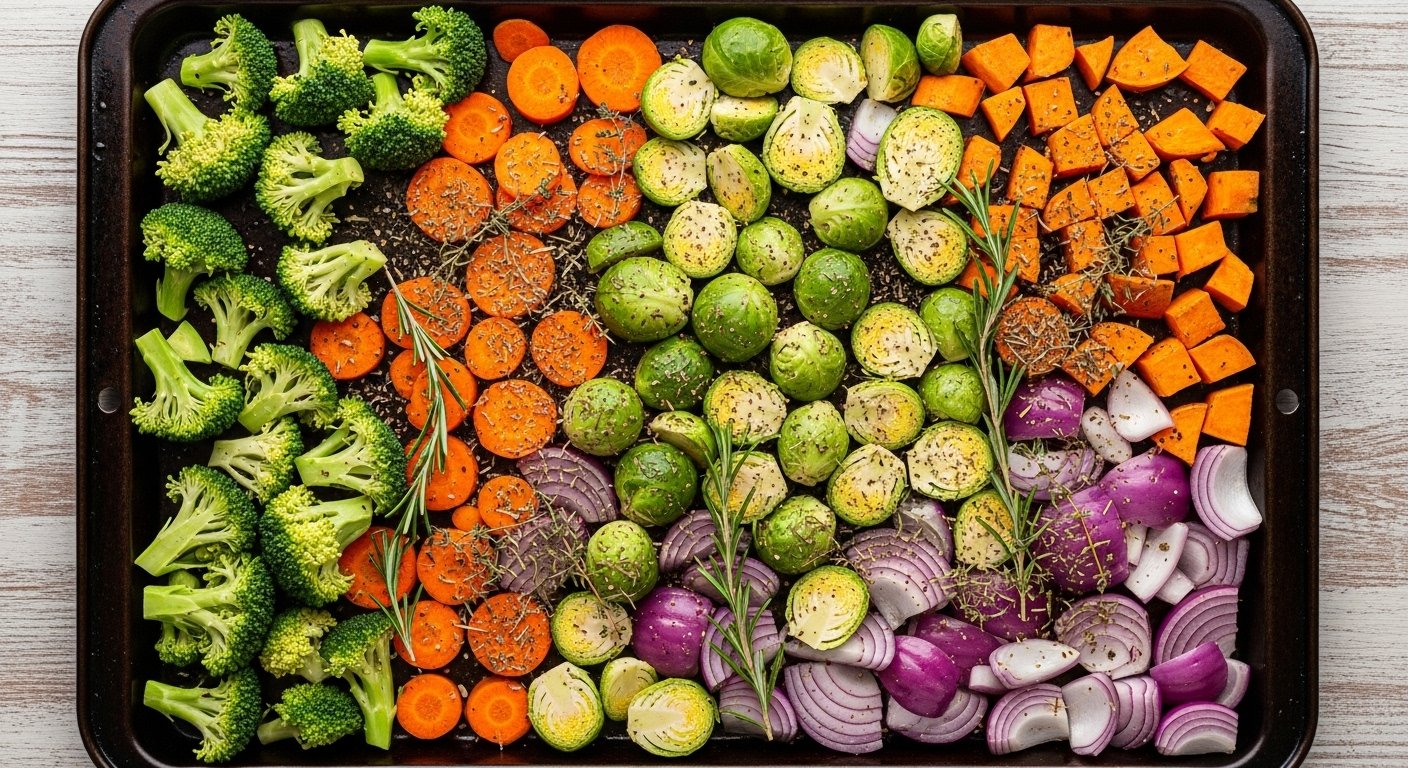
The Maillard Reaction: The Science Behind Delicious Roasting
The magical transformation that occurs when vegetables brown and become incredibly flavorful is largely due to the Maillard reaction. This is a complex chemical reaction between amino acids and reducing sugars that happens when food is heated, typically above 280°F (140°C). [2] It’s responsible for the rich, savory aromas and deep golden-brown crust that make roasted vegetables so appealing. Without it, your vegetables would simply taste boiled or steamed.
Properly prepared vegetables, especially those cut into uniform pieces and coated lightly with oil, reach the ideal surface temperature quickly. This facilitates the Maillard reaction, developing those delicious complex flavors and beautiful caramelization. Understanding this process highlights why high heat and avoiding a crowded pan are so essential to getting crispy roasted vegetables.
For more in-depth information on this fascinating process, you can explore resources like this explanation of the Maillard reaction from McGill University. [2]
Roasting Different Vegetables Together: Sheet Pan Roasted Vegetables
Sheet pan roasted vegetables are a fantastic way to create an easy, healthy meal. However, successfully roasting different vegetables together requires a bit of strategy to ensure everything cooks evenly.
Strategy for Mixed Roasting
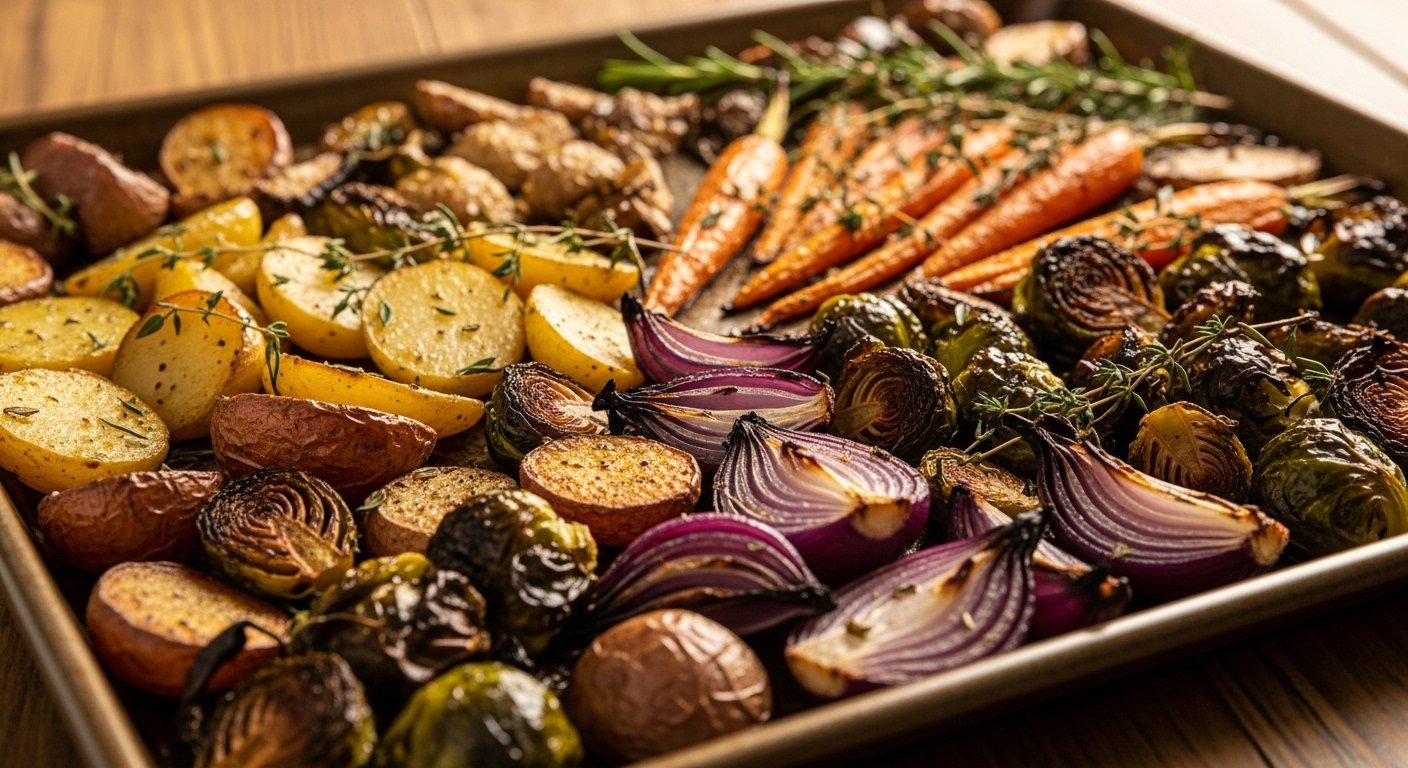
Popular Roasted Vegetable Recipes to Try:
Healthy Roasted Vegetables: Nutrient Retention and Risks
Roasting is a popular cooking method, but it’s natural to wonder about its impact on nutritional value. The good news is that roasted vegetables are generally healthy, offering a delicious way to enjoy your produce. Cooking, including roasting, can break down plant cell walls, making antioxidants like beta-carotene, lycopene, and lutein more available. For example, one cup of cooked spinach provides almost triple the calcium (260mg) compared to three cups of raw spinach (90mg calcium). [1]
However, there are also considerations for nutrient loss and potential risks. Roasting at very high temperatures can lead to significant nutrient loss, particularly for vitamins from the B complex and vitamin C, with possible losses of 50-70%. [3, 13] This is because these vitamins are heat-sensitive. Moreover, charring starchy vegetables during roasting can cause the formation of acrylamides, which are potential cancer-causing chemicals; it’s recommended to roast to a golden brown instead of burning them. [8, 9, 14, 15] Therefore, aiming for a golden hue rather than a deep char is a healthy approach. [8] For further reading on nutrient retention during cooking, you can consult authoritative sources like the Tufts Health & Nutrition Letter. [3]
Tips for Maximizing Health Benefits:
Mastering the art of roasting vegetables is a rewarding skill that elevates your home cooking. By following these straightforward principles – proper cutting, adequate oil, generous seasoning, high heat, and ample space – you will achieve perfectly crispy, flavorful, and healthy roasted vegetables every single time. Experiment with different combinations and seasonings to discover your favorite creations. Happy roasting!
